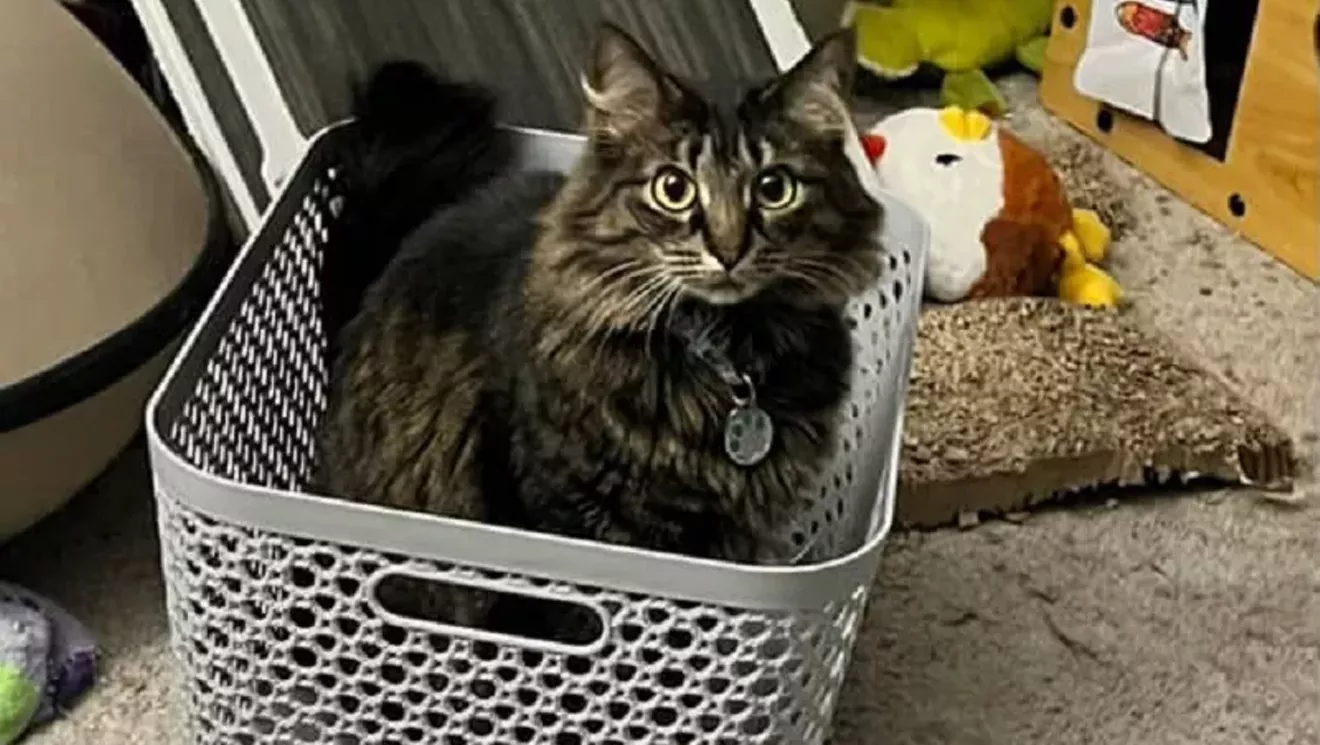How to Find a Lost Cat

All the cats in my house are indoor cats, but somehow, two weeks ago, our Maine coon, Sabrina, got out. Sadly, we couldn’t locate her before she was hit by a car and killed. We were devastated and felt like utter failures as pet owners.
In the few days before she was found, we tried a dozen different tactics to track her down. It was a crash course in lost pet protocols. If we couldn’t save Sabrina, maybe what we learned can help save your beloved pet. Here are some tips that can hopefully bring a furry family member home.
Stuff to Do BEFORE They Get Out
One thing I wish we knew before all this was how cheap airtag collars were. A collar and tag together cost only about $35 from Amazon. The airtag has enough battery life for a year before you have to replace it, but it makes up for that cost by effortlessly syncing with your smartphone. It will even beep when you get close.
Virtually every pet adoption agency these days springs for microchipping. While this won’t necessarily help you locate your pet, it will definitely identity them if they are found. However, make sure that you register your pet’s microchip, including with their current name, address, and a recent photo. The usual companies are 24PetWatch or HomeAgain.
Speaking of photos, make sure you have a clean, hi-res image of your cat saved somewhere. It’ll be helpful later when making posters and looking online. Many vets like VCA allow you to upload identifying photos to their medical profiles, so that’s an easy way to keep one accessible if you don’t want to scroll through hundreds of photos on your phone when you’re upset.
Stuff to Do AFTER They Get Out
The obvious thing to do is look. Most cats stay near where they live, even if they can’t find the house or apartment again. Cats are most active at dawn and dusk, so looking nearby around sunrise or sunset is the best time to find them moving rather than hiding.
For indoor cats, the outside can be scary. Make sure you check along fence lines and under bushes to see if they are cowering. If it’s dark, bring a flashlight because the light will reflect off the eyes of a hidden cat. If your cat responds to food noises at home, such as shaking a bag of kibble, bring that with you and try to entice them out.
This is a good time to meet your neighbors. Over the 72 hours Sabrina was missing, I asked a dozen people walking in the neighborhood if they had seen her. None had, but all promised to keep an eye out for her. NextDoor can also be helpful.
When it was clear Sabrina was gone and hadn’t just found a really clever hiding place, we registered a profile on Petco Love Lost. It automatically loads your pet’s information into shelter databases and looks for matches. The matchmaking software isn’t spectacular. It kept trying to tell me a male cat 30 miles away was Sabrina, but it’s a quick way to make sure shelters know you’re looking.
Posters are not a waste of time. When Sabrina was found, it was less than 20 feet from a pole with one of our posters, and the woman who called us got our number from it. There are templates all over the internet for quick and easy creation. This is where the nice picture I mentioned earlier comes in.
One word of caution: Once you start filling all these forms out online, there’s a fair chance you’ll be targeted for scams. One prominent scam is people pretending to find your pet and then asking for money up front. While it’s not impossible that the bad guys from a Taken movie found your cat, it’s unlikely. Simply tell them you’ll meet them at a vet to verify. If they decline, it’s a scam.
There are also services offering to use trained dogs to track your cat. While not necessarily scams, they do often traffic in false hopes. Tracking and trailing dogs are only going to be useful in certain circumstances, and the thing they are best at is finding corpses. Before hiring such a services, read this guide by Lost Pet Research and Recovery to manage your expectations.
Do not put your poster and contact information on social media. Remember, odds are your cat is less than a mile away. Shares might be validating and comforting, but they are also fodder for scammers.
Your neighborhood likely already has a couple of territorial feral cats around. If their territory includes your house, they may harass your cat out of it and prevent them from returning. For this reason, it’s usually a good idea to make your search radius a couple of blocks.
Lastly, consider a live trap. These are mostly used to catch raccoons and invasive species, but they work just fine for cats. They run $75 to $150, and can be bought at most feed stores and some hardware stores. Place them against a wall of your house with some of your cat’s food inside and maybe an article of clothing that smells like you on top. Although this didn’t work for us, I have had friends it did work for. Odds are you will catch at least one possum. Just let them out again. They’ll usually learn not to try twice.
If You Find Them Alive
Congratulations! Keep the cat in quarantine until you can get to your vet. It’s a good idea to perform a basic blood panel and make sure the cat hasn’t picked up something contagious. If not spayed, also get a pregnancy test.
If You Don’t
One of the saddest things I’ve ever done is to delete a pet profile on my vet’s app as well as on Love Lost. As hard as it is losing a pet, being inundated with false positives or reminders for annual checkups is very depressing. Take down your posters as well. Your good hearted neighbors will keep calling or texting, hoping to help.
Lastly, you can finance most pet cremation and urns through Affirm or CareCredit. It’s not the way I wanted to bring Sabrina home, but at least she’s here. Good luck to you.

Reign Bowers is an outdoor enthusiast, adventure seeker, and storyteller passionate about exploring nature’s wonders. As the creator of SuperheroineLinks.com, Reign shares inspiring stories, practical tips, and expert insights to empower others—especially women—to embrace the great outdoors with confidence.




Post Comment